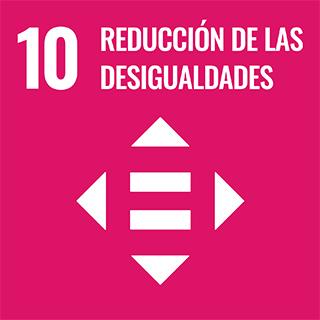
Indexed in
License and use

Impact on the Sustainable Development Goals (SDGs)

Analysis of institutional authors
Díez-Bermejo AAuthorRodríguez-Suárez I.Authorálvarez-Del Valle LAuthorCórdoba-Hernández R.AuthorSánchez-Toscano G.AuthorHernández-Aja A.AuthorThe regional strategy for social cohesion and inclusion in andalusia: The “eracis” (estrategia regional andaluza para la cohesión e inclusión social. intervención en zonas desfavorecidas)
Publicated to:Ciudad Y Territorio Estudios Territoriales Cytet. 53 (1): 159-178 - 2021-01-01 53(1), DOI: 10.37230/CyTET.2021.M21.09
Authors: Díez-Bermejo A; Rodríguez-Suárez I; Álvarez-Del Valle L; Córdoba-Hernández R; Sánchez-Toscano G; Hernández-Aja A
Affiliations
Abstract
The Estrategia Regional Andaluza para la Cohesión e Inclusión Social. Intervención en Zonas Desfavorecidas (ERACIS) is an initiative launched in 2018 whose goal is to detect Andalucia’s disadvantaged areas based on indicators and to intervene them through Local Plans (Planes Locales de Intervención en Zonas Desfavorecidas: PLIZD) designed and implemented by local authorities. This strategy is a comprehensive public policy based on multilevel governance systems and represents the latest generation of instruments developed in Andalucía over three decades to propose specific solutions to public problems in the fight against urban inequality. The article analyzes the objectives, methodologies and implementation of the tool and carries out an evaluation of the urban vulnerability dimensions contemplated in the strategy indicators.
Keywords
Quality index
Bibliometric impact. Analysis of the contribution and dissemination channel
The work has been published in the journal Ciudad Y Territorio Estudios Territoriales Cytet due to its progression and the good impact it has achieved in recent years, according to the agency Scopus (SJR), it has become a reference in its field. In the year of publication of the work, 2021, it was in position , thus managing to position itself as a Q2 (Segundo Cuartil), in the category Urban Studies.
Desde una perspectiva relativa, los impactos normalizados en entornos vinculados a las áreas de humanidades y ciencias sociales dentro del contexto nacional, este trabajo consigue un valor de citación normalizada, calculado a partir de los datos proporcionados por Dialnet Métricas, de: 13.21, lo que indica que, de manera comparada con trabajos en la misma disciplina y en el mismo año de publicación, lo ubica como trabajo citado por encima de la media al menos en el contexto nacional. (source consulted: Dialnet Metrics Dec 2023)
Según las diferentes agencias de indexación, el número de citas acumuladas por esta publicación hasta la fecha 2025-08-13:
- Dialnet Métricas: 7
- Open Alex: 1
- Scopus: 2
Impact and social visibility
Leadership analysis of institutional authors
There is a significant leadership presence as some of the institution’s authors appear as the first or last signer, detailed as follows: First Author (DIEZ BERMEJO, ANA) and Last Author (HERNANDEZ AJA, AGUSTIN).

